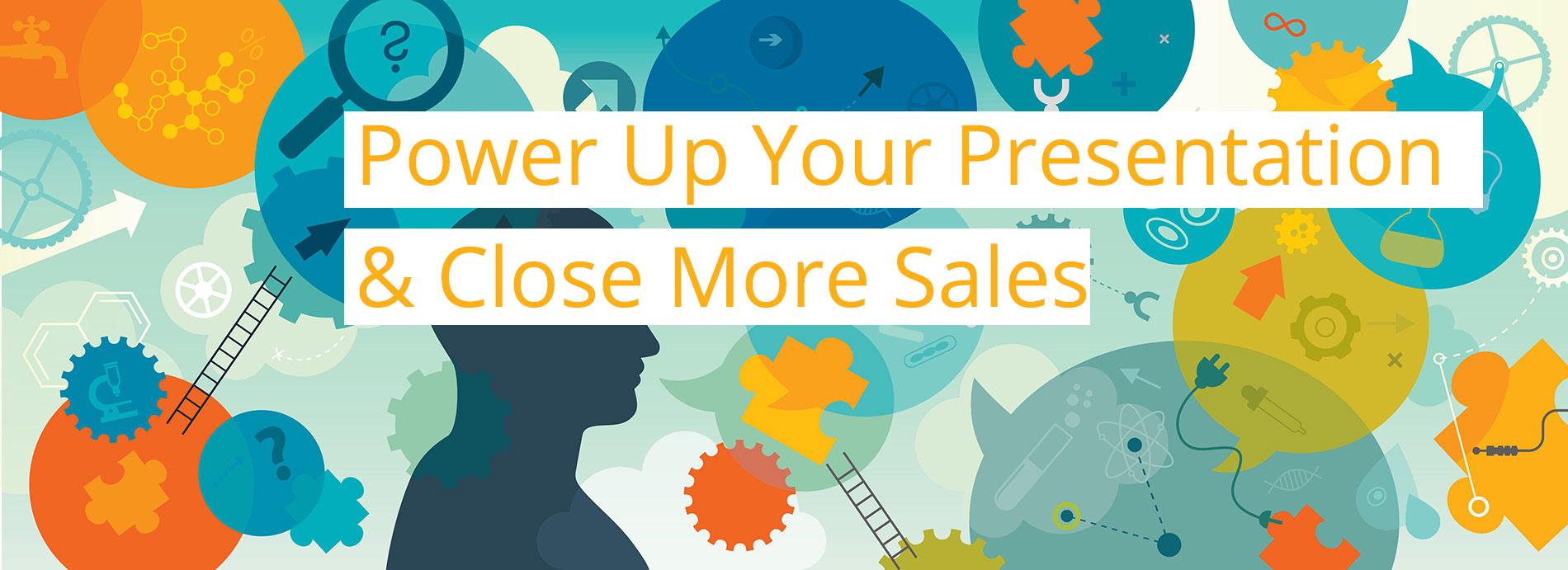Let’s be honest we have all been guilty of finding ourselves blabbering on in a sales presentation while being keenly aware that our customer’s eyes are glazing over with other more important issues like what they are planning for dinner.
Why is talking less than our customer during a sales presentation so difficult? Like any idea that makes total sense, it’s a little more complicated than it appears. In a free Webinar I recorded on Tuesday November 15th 11:00 am PST / 1:00 pm EST, I shared proven tips on how to avoid and conquer a few of the most common presentation pitfalls. As a sneak preview, see below some thoughts on the topic.
In today’s world, knowledgeable customers can be somewhat annoyed and even downright irritated with sales people who talk to much and lack the skill, attitude and knowledge to discover less obvious needs and present meaningful personalized solutions.
I remember vividly my own first sales efforts were not an overnight success. Newly married and still finishing college I had the bright idea that I could sell carpet to make my living. I was trying to do everything right, I knew my product and I shared all the features and benefits of the carpets I represented at the first opportunity. I was confident and enthusiastic and none of it was working. Most presentations would end with prospects telling me, “I have to think it over and get back to you.”
Of course, most of the customers did not get back with me and now I know why. I was selling the old way and even back then those techniques were not effective. I quickly learned and now I make my living teaching others that to be successful at sales requires a completely different approach.
Here are some common pitfalls and a few important tips I want to share:
Have a plan, be prepared to listen and approach each customer as a unique service opportunity. An effective sales process needs to include a beginning (making a positive impression and building a connection), a middle (asking about the customers situation and discovering core needs), and an end (presenting a solution, asking for the sale and overcoming objections). Sales people often get off track and launch into the sales presentation to early in the process. This can lead to a presentation that is generic, long and ineffective.
First, if a sales person does not have a plan they can be easily distracted and persuaded to skip important steps and fall into old habits. The problem is that if you do not build a relationship of trust with the customer they will not tell you the truth. Without the truth all that is left is a generic meaningless presentation that will not resonate.
Solution: Sales people should have a sales plan that includes a process and even a script that will help the sales person stay focused on accomplishing each step in the right order.
Second, A common challenge for sales people is that they have been conditioned to answer when asked a question. Unfortunately, this habit makes it very easy for the customer to take control of the conversation and force the salesperson to abandon their process and start talking.
Solution: Sales people need to be trained to respond to customer questions with questions that help clarify and prioritize the requests and redirect the conversation back to the planed process.
Third, sales people often lack the confidence and understanding that even though customers is asking for basic information, what they really want is to learn how your product or solution can uniquely help solve their personal challenge.
Solution: Salespeople have to change their perspective and approach the sales conversation like any other professional. I think we all expect that a doctor, a lawyer or any other professional, would need to first understand our situation before they recommend a course of action or solution. Sales people need to view themselves as a professional and be accountable to have the skill and confidence to look at each customer interaction as an opportunity to provide needed service and not just make a sale.
Fourth, most salespeople have the misconception that more is always better. It is not uncommon to hear sales people use their presentations to tell prospects about every benefit that their community offers before they find out what is really important. Customers only care about the aspects of your product that address their specific challenges. Everything else is irrelevant.
Solution: The goal is to ask questions about the different aspects of the community’s services and to listen deeply to the answers provided by the customer. Values targeted listening requires a solid understanding of the end goal and a competence in listening that only come from continuous practice. The reward for this type of listening is you get to clarify and prioritize the answers provided by the customer and uncover the values and motivations that are driving their interest. Once you have uncovered the prospects needs and values you are ready to present the information tailored to what they care about.
Fifth, customers will often ask questions or make statements during the sales process that are intended to disqualify you and your product not the other way around.
Solution: The sales persons goal is to maintain control of the sales process and identify what is important to the customer so they can make the presentation personal and valuable. First, be respectful of the customer, stop your process and address a customers questions or statements. It is important to let the customer know you have heard and are interested in helping them with their question or statement. First, a great way to do this is to simply repeat the question as closely as possible and ask: “Is that correct”? Second, use this opportunity to listen a little more deeply for the underlying issues or concerns that motivated the customer to ask the question. Third, reassure the customer that you would like to address the concern in the appropriate spot in the sales process, (when the plan calls for the presentation). The trick here is to: 1. Be careful not to ignore customer questions. 2. Always take the opportunity to understand the motives behind the question before you answer. 3. Be careful not to inadvertently start the presentation in the wrong place by answering a customer’s questions early in the process. 4. Remember, incorporating what is important to the customer in your presentation is always more important than what you had planned to presentation. A good rule of thumb: Present what you absolutely must present until you are sure you understand what is really important.
I know that what is outlined above can be a little overwhelming so here is a simple rule to follow.
Always get feedback: Getting feedback from your customer is the best sales presentation technique of all. After you make a key point about your product, ask the prospect for feedback with a question such as, “Does this make sense for your world?” or “Could you see this applying to you?” By doing this, you are prompting the customer to either give his approval or explain why it doesn’t make sense. When you get the customer’s approval they are beginning to slowly close the sale for you. On the other hand, when they tell you that it doesn’t make sense, you create an opportunity to adjust your offering to increase the likelihood of closing the sale.
Now that you have your tips for a perfect sales presentation, apply them immediately and watch your closing ratios jump to the next level.
How do you improve your sales presentations? I’d love to hear your ideas?.
Click Here to learn about ValueMatch Sales Skills Training.
Will Nowell
Author ValueMatch Selling
President, Peak Performance MS
wnowell@peakperformncems.com
Direct Line: (602) 284-0124







